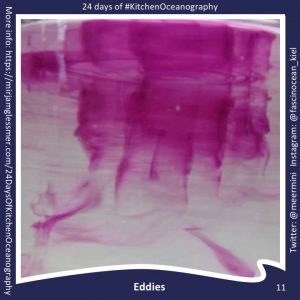
Tag: eddies

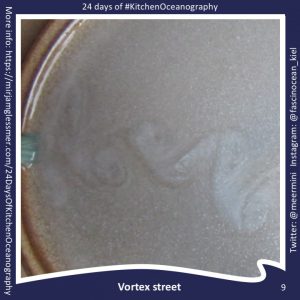

Thermal forcing vs rotation tank experiments in more detail than you ever wanted to know
This is the long version of the two full “low latitude, laminar, tropical Hadley circulation” and “baroclinic instability, eddying, extra-tropical circulation” experiments. A much shorter version (that also includes the…
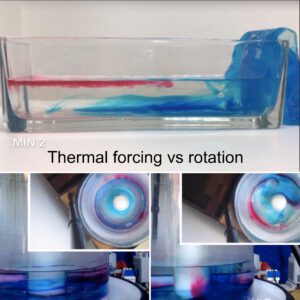
Thermal forcing vs rotation
The first experiment we ever ran with our DIYnamics rotating tank was using a cold beer bottle in the center of a rotating tank full or lukewarm water. This experiment is…
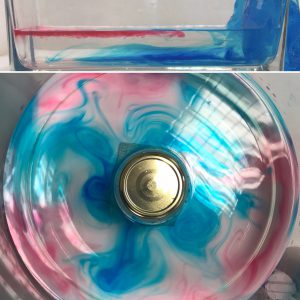
Thermal forcing in a non-rotating vs rotating case: Totally different results
On Thursday, I wrote about the thermally driven overturning circulation experiment that Torge and I did as past of our “dry theory 2 juicy reality” experiments, and mentioned that it…
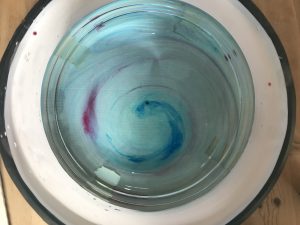
Spinning dye curtain — when a tank full of water has not reached solid body rotation yet
With all the rotating tank experiments I’ve been showing lately, one thing that comes up over and over again is the issue of solid body rotation. On our DIYnamics-inspired turntable for…

Experiment: Eddy in a jar
Rotating experiments in your kitchen. Eddies, those large, rotating structures in the ocean, are pretty hard to imagine. Of course, you can see them on many different scales, so you…

Of swirls, eddies and fairy dust
Similarly to last Friday’s Kelvin-Helmholtz instabilities, observing swirls and eddies made from green fairy dust is not really what we are in Grenoble for. But are they pretty! And it is actually…

Creating eddies
I always love watching paddles in water, or ships in water, or ducks in water, or anything water, really, but on a wind-less day in Ratzeburg, Siska managed to create…

Diving ducky and resulting eddies
My sister and I did a little sight-seeing tour in Hamburg the other day, and one of the most fascinating things I saw was — a diving duck. Now, that is…

Eddy generation and optics.
Eddies. Dips in the surface and shadows on the ground. I always get really fascinated by watching how eddies are generated by obstacles in a fluid. But it is especially…

Currents caused by thrusters
Or: fast inflow into nearly stagnant water body Did you ever notice how when certain ferries dock, they stop, already parallel to the dock, a couple of meters away from…

Vortex street
Do you use a tide chart to find the best time for your Saturday walk, too? I showed you a vortex street on a plate formed by pulling a paint brush through sugary…

Shear flow
Kelvin-Helmholtz instabilities in a shear flow in Elbe river. Last week I talked about how I wanted to use the “Elbe” model in teaching. Here is another idea for an exercise: On…

Vortex streets on a plate
You might think that three hours of canoe polo on a Saturday morning would be enough water for the day, but no. As when I did the experiment for the “eddies in a…

Collapsing column
Or: This is what happens to a hetonic explosion experiment without rotation. I’ve posted a lot while at JuniorAkademie a while back, so it is hard to believe there are still experiments…

Currents on soap bubbles
There are currents and eddies and whirls everywhere! Today, Rolf showed us currents on soap bubbles. Check out the movie below for moving pictures!

Hadley cell experiment
Cooling and rotation combined. (deutscher Text unten) I can’t believe I haven’t blogged about this experiment before now! Pierre and I have conducted it a number of times, but somehow…

Hetonic explosion
Or, an experiment on this blog often known as “slumping column”. (deutscher Text unten) If you don’t scale your tilting of frontal surfaces under rotation experiment correctly, you get a phenomenon…

Tilting of a frontal surface under rotation
Eddy in a rotating tank. This is an experiment that Pierre and I ran two years ago in Bergen but that – as I just realized – has not been…

Eddies – surface imprint and optical properties
You can see “shadows” of eddies on the ground! As everybody who has ever watched a bath tub drain knows – eddies do lead to a deformation of the water’s surface.…